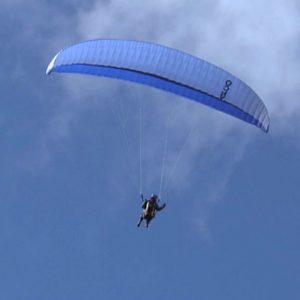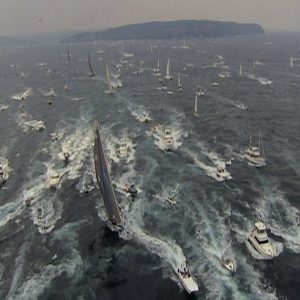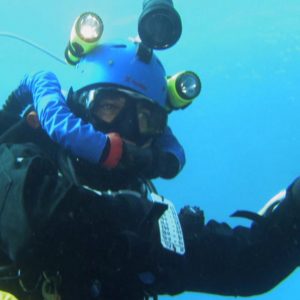The Science of Sailing
A fascinating look at the science and psychology behind the extreme adventure of ocean sailing.
Few yacht races can claim the legendary status of winning or even finishing the Sydney to Hobart event. The 630 nautical mile race takes yachts down the Australian coast and across the notorious Bass Strait to Tasmania.
X Force = The Science of Sailing follows the fortunes of the 66-foot Grundig, a fast, lightweight racing yacht, as she takes on huge maxi yachts in a race across one of the most dangerous stretches of water in the world.
Before them is a contest with a fearsome reputation. As recently as 1998 the Sydney Hobart race turned to tragedy when unexpected hurricane force winds hit the fleet in the Bass Strait. Within hours five yachts sank and six men died, while a further 60 vessels pulled out, many of them badly damaged.
Grundig, the brain-child of Australian skipper Sean Langman, breaks all the conventions with its fast, flat hull, rather than the deep vee design of most ocean racers. It is little more than a scaled-up 18-footer — the fastest of all mono-hulled yachts — sent to sea to compete against ocean-going maxi yachts.
It is a gamble. Not only is Langman taking a punt on favourable weather conditions providing mostly tail winds — something that almost never happens in this race — he is also taking a roll by even considering taking a lightweight yacht into heavyweight conditions. This is no Sunday sail on the harbour.
Sean Langman is joined by his great mate David Witt, a three-times world champion onboard 18-footers, who will act as tactician. A fierce competitor, he promises to be on his skipper’s back as much as any of the opposition. Grundig’s crew of just twelve face an epic battle playing David to the Goliath of the 80 footers which boast crews of 26.
Grundig very nearly doesn’t even make the starting line with organisers questioning whether she would be able to right herself if she capsized. What follows is a frantic battle against time to make modifications and strengthen the vessel.
Sean and his team make it to the line for what turns out to be an eerily quiet start to the Sydney to Hobart race. Rather than the usual harbour-churning jockeying for position, the competitors are nearly becalmed in strange wind conditions blamed on some of Sydney’s worst-ever bush fires.
More strange weather is to come, with a huge twister, which has a diameter the size of a football stadium, threatening to engulf a number of yachts. X Force = The Science of Sailing includes unique footage of what happens onboard the 80-foot maxi yacht Nicorette when she is dragged into one of these massive seaborne tornadoes.
Grundig manages to escape the pull of one of the twisters and is soon battling the leaders at the head of the fleet, despite her size handicap and the fact she is sailing into unfavourable winds. By dawn on the second day she is still right in contention and the evening forecast points to a favourable weather change which could power her into the lead.
But in true Sydney to Hobart race fashion, disaster is just around the corner and heavy seas in the Bass Strait cause the hull to start breaking-up. Drama follows as the crew must draw on all their ingenuity to make running repairs and keep the boat afloat. It is a long night as Grundig limps 100 miles back to the mainland and eventual safety.
The race is over for Grundig, Sean Langman, David Witt and their crew. Their quiet landfall at the tiny fishing village of Eden contrasts sharply with the wild and noisy greeting that awaits the race winners in Hobart.











